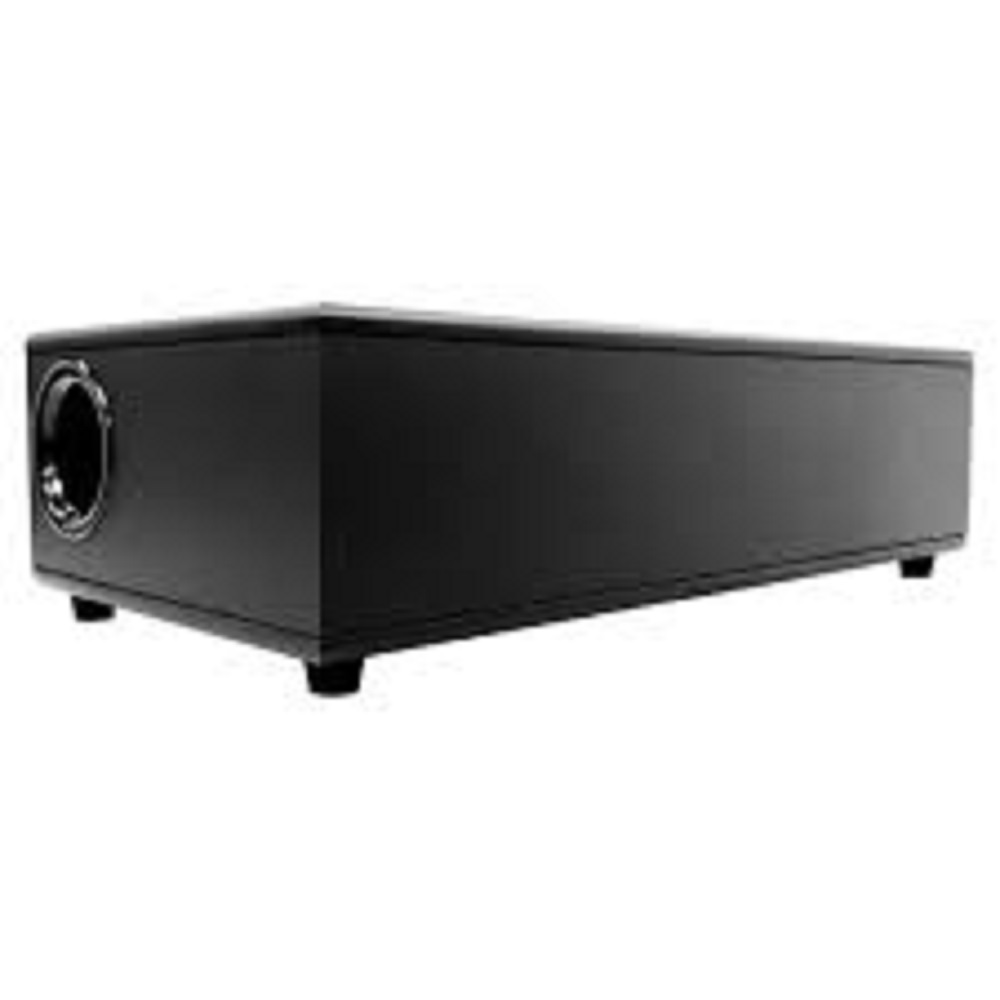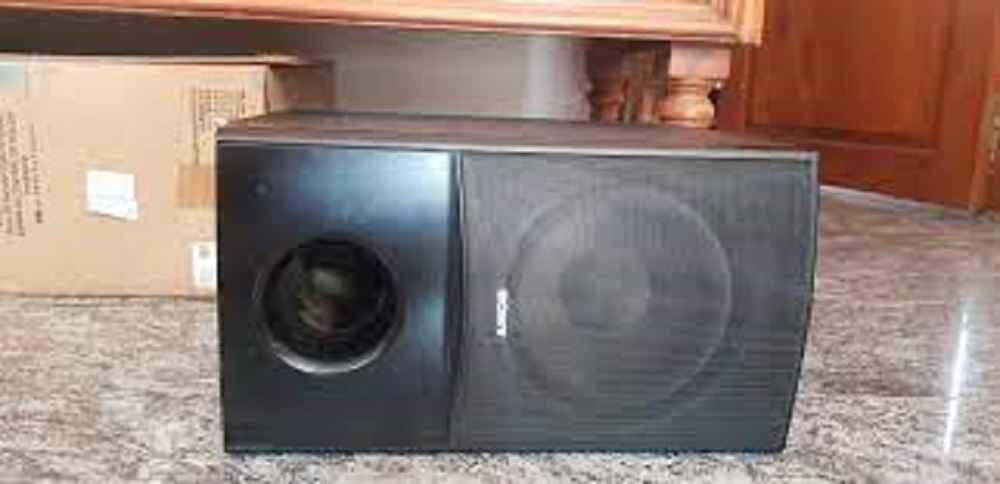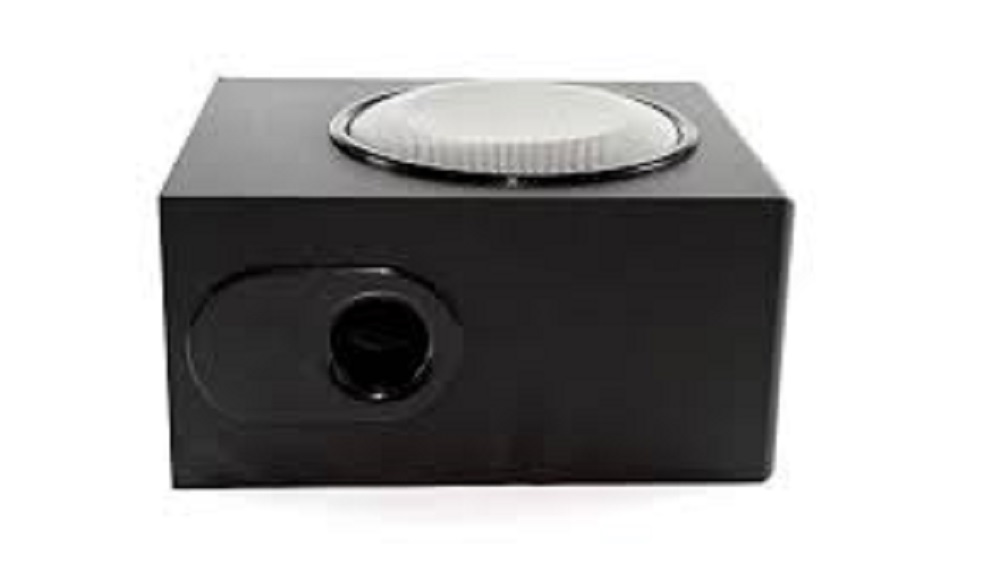A subwoofer is an essential component in a home theater or music system. It is responsible for reproducing the lower frequencies of sound, such as bass, drums, and other deep sounds, that are often missing in regular speakers.
Proper placement and orientation of the subwoofer can greatly enhance the overall sound quality of your system. The purpose of this article is to explain whether it is a good practice or not to lay your subwoofer on its side.

The Basics of Subwoofer Orientation
Subwoofers can be placed either horizontally or vertically, depending on the design of the speaker and the available space in the room.
In general, subwoofers are designed to be placed vertically, as this orientation is considered to be the optimal setup for producing the best sound quality.
Subwoofers work by generating sound waves through the movement of the speaker cone. The orientation of the subwoofer affects the way that these sound waves are projected into the room, which in turn affects the overall sound quality.
There are several factors that can impact the sound quality of a subwoofer, including the size and layout of the room, the type of music or content being played, and the acoustic properties of the speaker and the room.

Can You Lay a Subwoofer on Its Side?
The simple answer is yes, you can lay a subwoofer on its side. However, there are pros and cons to this setup, and it’s important to consider these factors before making a decision.
One of the pros of laying a subwoofer on its side is that it can save space in a room that has limited floor space. It can also make it easier to install the subwoofer in tight or awkward spaces.
However, laying a subwoofer on its side can also have a negative impact on sound quality and performance.
For example, the orientation of the subwoofer can affect the way that the sound waves are projected into the room, which can lead to sound distortions and a loss of bass.
It’s also important to consider the compatibility of your subwoofer with this orientation. Some subwoofers are specifically designed to be placed vertically, and laying them on their side can cause damage to the speaker or compromise its performance.
Factors to Consider When Laying a Subwoofer on Its Side
When laying a subwoofer on its side, there are several factors that you should consider to ensure that the sound quality and performance are not compromised.
Room Size and Layout:
The size and layout of your room can have a significant impact on the sound quality of your subwoofer. In general, smaller rooms will benefit from a vertically oriented subwoofer, as this will help to maximize the sound projection into the room.
Larger rooms may be able to accommodate a subwoofer in either orientation.
Type of Music or Content Being Played:
The type of music or content that you are playing can also impact the sound quality of your subwoofer.
For example, music with a lot of deep bass may sound better with a vertically oriented subwoofer, while music with a more balanced frequency range may perform well with a horizontally oriented subwoofer.
Speaker and Room Acoustic Properties:
The acoustic properties of your subwoofer and your room can also impact the sound quality.
For example, a room with high ceilings or large windows may require a vertically oriented subwoofer to ensure that the sound waves are properly projected into the room.
Recommended Practices for Laying a Subwoofer on Its Side
If you decide to lay your subwoofer on its side, there are several recommended practices that you should follow to ensure that the sound quality and performance are not compromised.
Position the Subwoofer on a flat, stable surface:
When positioning your subwoofer, it’s important to ensure that it is placed on a flat, stable surface, and that it is not exposed to direct sunlight or other sources of heat.
You should also make sure that the subwoofer is positioned away from walls and other objects that may obstruct the sound waves.
Ensure Proper Ventilation and Protection:
It’s important to ensure that your subwoofer has proper ventilation, as laying it on its side can restrict the flow of air to the speaker.
You should also protect the subwoofer from scratches, dings, and other types of damage by using a subwoofer mat or other protective covering.
Properly Adjust the Sound Settings:
Finally, you may need to adjust the sound settings on your subwoofer and amplifier to ensure that the sound quality is optimized. This may include adjusting the crossover frequency, volume, and phase settings to ensure that the subwoofer is properly integrated with your other speakers.

Conclusion
Laying a subwoofer on its side can be a useful option for those who are short on floor space or who want to experiment with their subwoofer placement.
However, it’s important to consider the factors that can impact the sound quality and performance of the subwoofer before making a decision.
By following the recommended practices for laying a subwoofer on its side, you can ensure that the sound quality and performance are not compromised, and that you get the most out of your home theater or music system.
In conclusion, while laying a subwoofer on its side can have some benefits, it’s important to consider the factors that may impact the sound quality and performance.
Experimenting with subwoofer placement can be a fun and rewarding experience, and by following the recommended practices, you can ensure that you get the best possible results.
Is it okay to lay a subwoofer on its side for long periods of time?
Yes, it is okay to lay a subwoofer on its side for long periods of time, as long as proper ventilation is maintained and the subwoofer is protected from damage.
However, if you are planning to use the subwoofer in this orientation for extended periods of time, it’s recommended to check the manufacturer’s guidelines for any specific recommendations or limitations.
Will laying a subwoofer on its side affect its warranty?
This depends on the manufacturer and the specific terms of the warranty.
Some manufacturers may have restrictions or conditions on how a subwoofer can be used or positioned, so it’s important to check the manufacturer’s guidelines and warranty terms before laying the subwoofer on its side.
Can I lay a subwoofer on its side even if it was designed to be used vertically?
Yes, you can lay a subwoofer on its side even if it was designed to be used vertically.
However, as mentioned in the article, there may be factors that can impact the sound quality and performance of the subwoofer when used in this orientation, so it’s important to consider these factors before making a decision.
How do I adjust the sound settings for a subwoofer that is laying on its side?
The specific steps for adjusting the sound settings for a subwoofer will depend on the type of subwoofer and amplifier that you have.
However, in general, you may need to adjust the crossover frequency, volume, and phase settings to ensure that the subwoofer is properly integrated with your other speakers.
It’s recommended to consult the manufacturer’s guidelines or seek the help of a professional if you are unsure how to make these adjustments.
Is there a difference in sound quality between a vertically oriented subwoofer and a horizontally oriented subwoofer?
The difference in sound quality between a vertically oriented subwoofer and a horizontally oriented subwoofer will depend on several factors, including the type of music or content being played, the size and layout of the room, and the acoustic properties of the subwoofer and room.
In general, vertically oriented subwoofers may perform better for music with deep bass, while horizontally oriented subwoofers may perform better for music with a more balanced frequency range.
It’s recommended to experiment with different subwoofer orientations to find the best option for your specific needs and preferences.
